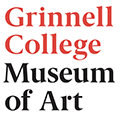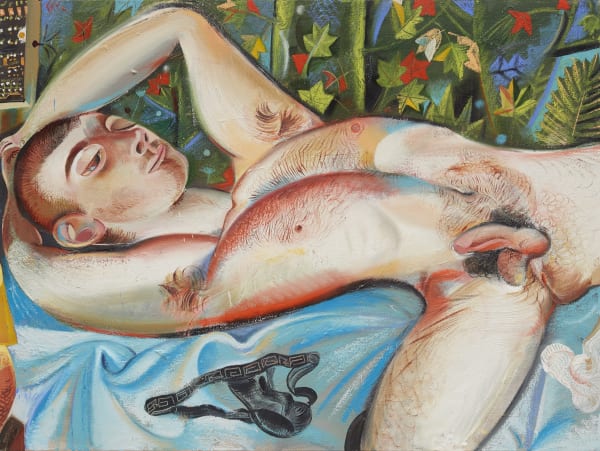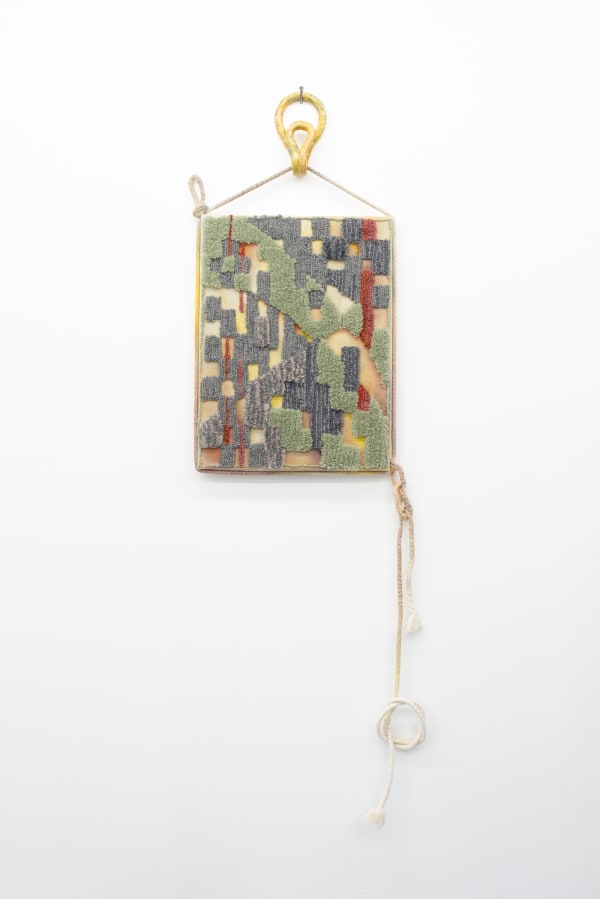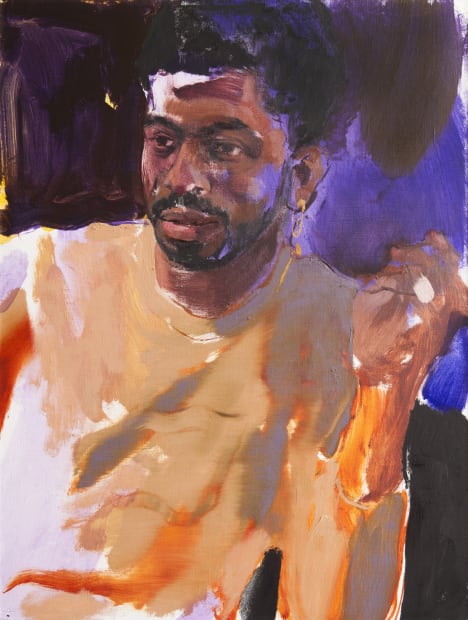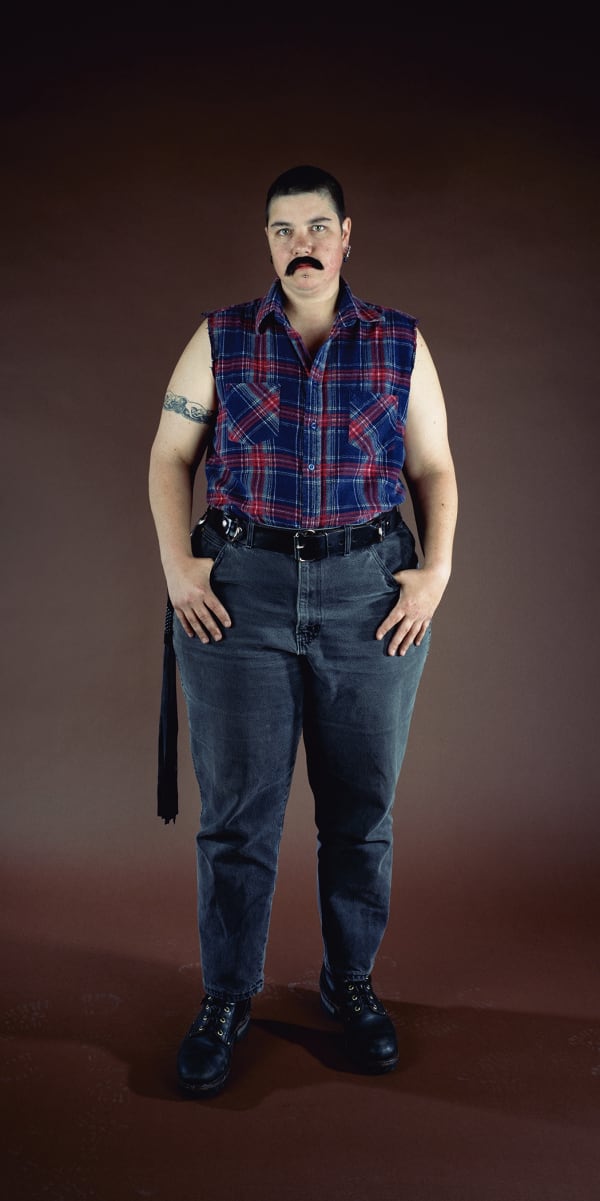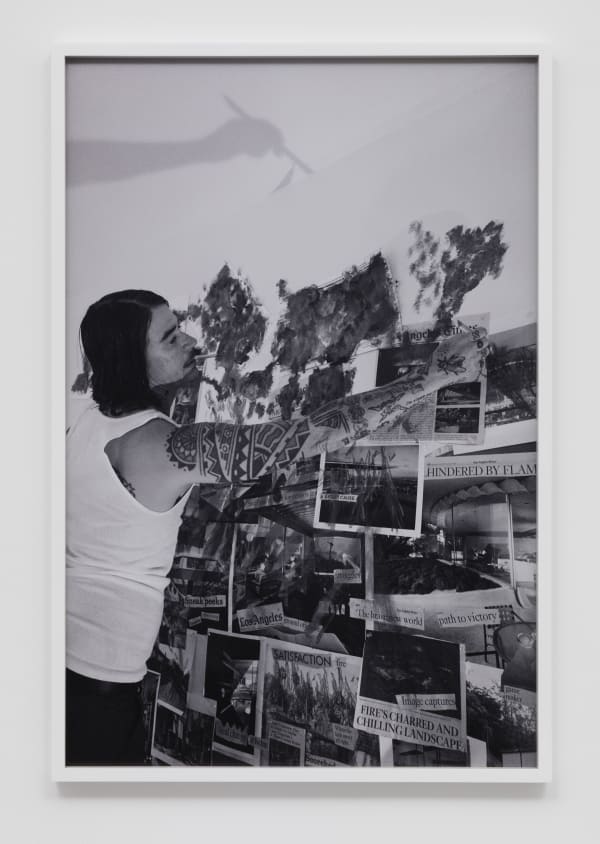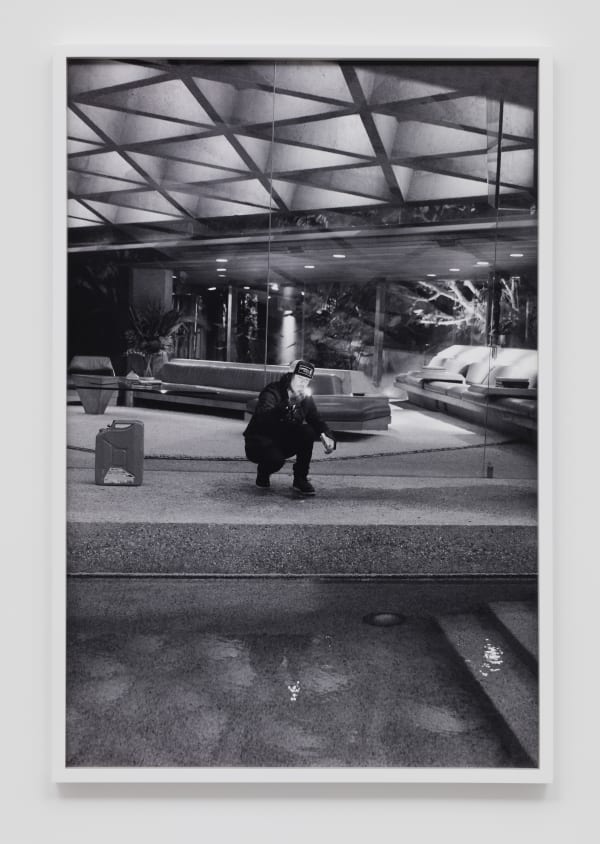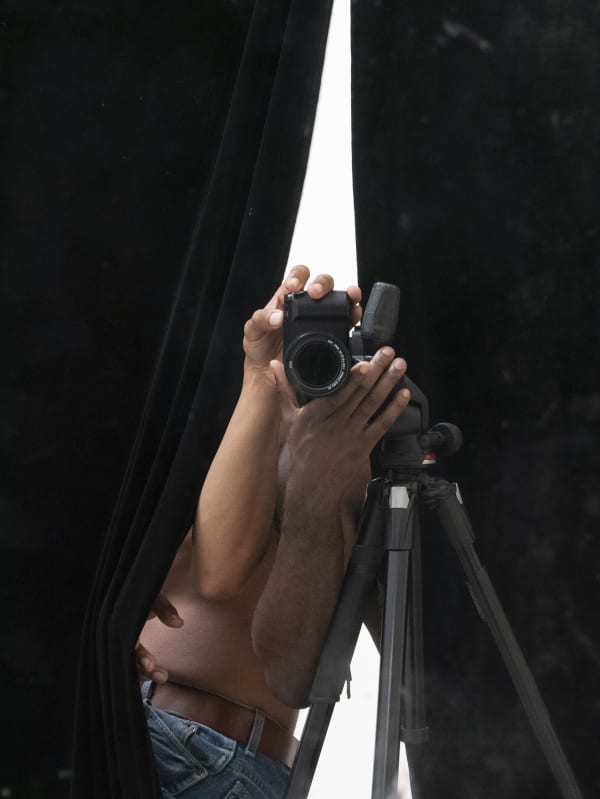-
Queer/Dialogue
September 7 – December 12, 2021
-
This exhibition presents eight artists — Louis Fratino, Jordan King, Jeremy Laing, Doron Langberg, Catherine Opie, Christina Quarles, Paul Mpagi Sepuya, and Devan Shimoyama — whose works enable dialogue at the intersections of identity expression: race, gender, individuality and otherness, equity within differences, with a focus on the body as expressive terrain.
The artists represent distinct voices across a spectrum of media, reflecting diversity in identity expressions where they intersect with contemporary political, social, and economic issues, always relevant but particularly charged at this moment.
Click Here for installation views
click here for exhibition events and programs
-
Scroll down to experience both the works and the words of the artists in the exhibition.
Navigate the page by using the buttons that appear between each section. The arrow (▵ or ▿) indicates whether that artist's section is above or below your present location.
Fratino ▿ King ▿ Laing ▿ Langberg ▿Opie ▿Quarles ▿Sepuya ▿ Shimoyama ▿
-

-

-
Installation Views
Queer/Dialogue
Click arrows at extreme left and right to scroll
-
Louis Fratino
he/him/his -

-

-
Listen to a Queer Reading by Kit Perry '22 of "Andrea in his hammock" by Louis Fratino
-
-
Listen to a Description of Works in the Exhibition by Louis Fratino
-
-
Featured works by Louis Fratino
-
Jordan King
she/her/hers -

-
PERFORMANCE
I look at the history and traditions of trans female-identifying performers going back to the 1950s and 60s. In this world (which was then a very niche world) of trans performance there were commonalities, decade after decade, in trans females' individual realizations. This became my driving force to think of myself as an artist. I realized that I am part of a legacy of many trans women who had come before me, performers and artists who were unrepresented and not celebrated as they could or should have been.
-
It started out as something that I was doing for myself, just to help me gain a bit of power.
And when I think back to it, there was immense power. It was a moment that I will remember for the rest of my life, gaining strength and feeling totally powerful in peeling off those layers. I thought, "Wow, I can actually be in my body and hug my body and show off my body.... Yeah, this feels like how I want to share who I am." There was — and is — self exploration, self understanding and self actualization in the act. When I think back to that initial period of performance for myself ... I never set out to try to recreate exactly how things were done at that different point in time or in that prior decade, it is about moving the history forward and taking inspiration from that and taking some of the ideas from that, but then also delivering it to a new audience, which then allows it to evolve and to continue to grow.
-
TRANSITION
The photos below were taken over two years in the course of my medical transition. Using this term presumes the reader understands the ways in which trans people in the 20th century transition, or begin expressing, living, and perhaps modifying physical characteristics to inhabit a gender identity other than the one assigned at birth.
In viewing these photos as a series, the viewer may scrutinize my appearance for these changes. Some are evident, some are not. Part of stage performance is an awareness of this scrutiny. I lived my medical transition publicly, in front of audiences, and as a result I acknowledge and anticipate the scrutiny. I also seek to challenge presumptions that trans identity is based solely on physical presentation and visible gender-defining characteristics.
-
Listen to an Interview with Jordan King
-
-
JEREMY LAING
he/she/they -
Laings’s practice pulls from many overlapping areas but at its center is always an intentional questioning and a very palpable dissonance or friction. His work creates and holds space for the idea of Queer bodies without specifically identifying who they are. There is an invitation extended to the viewer to engage but also enough nuance and subtlety that only those who seek shall find. The ideas around Queerness that these physical works and created spaces explore always seem to be just ahead of us. To come to rest on any one specific reading or arrangement seems unlikely.
This refusal to reveal everything may sound at first like a refusal to commit, but it is this very refusal to commit that actually gives each of these works their power and renders them Queer. There is an intentional refusal to limit what they are and therefore to limit what they can become.
Laing moves easily between media, made easier by his greater interest in the concept than the object, or perhaps in the tension and friction between the two. There are often holes in Laing’s work. Literal holes, waiting to be filled; holes recently mended or embellished and existing only to act as a pass through; holes as exit or entry to another side or another idea. His work creates and holds space for other ways of thinking and other ways of being, even those of the viewer. His works are connected to his community-building and people-focused projects, different but linked in their exploration of spaces and the questioning of who and what gets to hold value within them. There is a conscious interrogation of intent behind all he produces and an intentional examination of both wanting to be seen and holding onto the power that comes from being invisible and/or not answering every question.
-

-
-

-
Listen to a Queer Reading by Zamashenge Buthelezi '22 of "Artwork-Life Balance" by Jeremy Laing
-
-
Listen to a Queer Reading by Bailey VandeKamp '22 of "Captive Vessel" by Jeremy Laing
-
-
Listen to a QUEER READING by Phillip Tyne '24 of "Leavings" by Jeremy Laing
-
-
Listen to a Description of Works in the Exhibition by Jeremy Laing
-
-
Featured works by Jeremy Laing
-
-

Jeremy Laing
Swatched Pot/Potted Swatch #13, 2019
-

Jeremy Laing
Swatched Pot/Potted Swatch #5, 2019
-

Jeremy Laing
Swatched Pot/Potted Swatch #11, 2019
-

Jeremy Laing
Swatched Pot/Potted Swatch #2, 2019
-
-
There is a cost to visibility which is sort of falling into line. I mean, back in the early 2000s, nobody was taking photos of people bobbing for butt plugs on stage at a party. If they were, maybe people would not have felt quite as free. Part of every gesture being a record, as in our contemporary moment, is the coterminous anxiety about how you are looking in that record at all times. There is no space that is off record ... which is also partly why, for instance, the parties I do ... well not now and not in the last year because of COVID, but the parties I'm doing most recently, and will do soon … are parties without a social media presence, just very word of mouth, no cameras on the dance floor. This is about wanting to prioritize a space that is still somewhat invisible .... And this is a kind of non inclusiveness, but in a way that I hope fosters a more dynamic shared experience in the moment. It's also why I don't want to port over this gesture into an institutional art context which rewards certain types of performances of visibility, instrumentalizes them in certain ways, extracts from them.
Art doesn't get to have everything. It doesn't get to colonize and extract from everything and everyone.
Sometimes the art is only for the people making it together, in the moment.
-
Doron Langberg
he/him/his -

-
Listen to an Interview with Doron Langberg
-
-
Listen to a Description of Works in the Exhibition by Doron Langberg
-
-
Featured works by Doron Langberg
-
CATHERINE OPIE
she/her/hers -

-

-
Listen to an Interview with Catherine Opie
-
-
Watch a documentary film by Sini Anderson
-
-
Watch an excerpt from The Modernist by Catherine Opie
-
-
LISTEN TO A QUEER READING by Annalise Rummelhart '24 of "Bo" by Catherine Opie
-
-
Listen to a Queer Reading by Dean Oppenheim '23 of "Model Fire #1" by Catherine Opie
-
-
Listen to a Description of Catherine Opie's Works in the Exhibition
-
-
Featured works by Catherine Opie
-
-

Catherine Opie
Bo, 1994
-

Catherine Opie
Sleep (The Modernist), 2016
-

Catherine Opie
Mirror #3 (The Modernist), 2016
-

Catherine Opie
Artist #2 (The Modernist), 2016
-
-
Christina Quarles
she/her/hers -

-
Listen to a Queer Reading by Elena Friedman '24 of "A Head of Ourselves (Lez We Get)" by Christina Quarles
-
-
Listen to an Interview with Christina Quarles
-
-
Listen to a Description of Works in the Exhibition by Christina Quarles
-
-
Featured works by Christina Quarles
-
Paul Mpagi Sepuya
he/him/his -

-

-
Listen to an Interview with Paul Mpagi Sepuya
-
-
-
Listen to a Queer Reading by Jenny Rodrigues Santos of "Mirror Study (0X5A6571)" by Paul Mpagi Sepuya
-
-
Listen to a Description of Works in the Exhibition by Paul Mpagi Sepuya
-
-
Featured works by Paul Mpagi Sepuya
-
Devan Shimoyama
he/him/his -

-

-
Listen to an Interview with Devan Shimoyama
-
-
Listen to a Description of Works in the Exhibition by Devan Shimoyama
-
-
Featured works by Devan Shimoyama
-
-
About the Curators
-

DANIEL STRONG
He/him/his
Daniel Strong has been Associate Director and Curator of Exhibitions at the Grinnell College Museum of Art since 1999. He holds master’s degrees in art history from Williams College/Clark Art Institute and Princeton University.
-

Greg Manuel
He/him/his
Greg is an independent curator with over 20 years experience in the art world including 12 years working at one of the most successful contemporary galleries in Canada. He is Co-Director of CArt Caribbean Art Fair and is currently a member of the Curatorial Advisory Committee for BAND Gallery (Toronto CA).
-
-
Queer/Dialogue
Acknowledgements
The concept of this exhibition was initially presented to GCMoA staff by a student, Tucker Haddock ’21. We expected to present the exhibition in the spring of 2021, at the culmination of their final semester at Grinnell, but the pandemic compelled its delay until fall 2021. We present it in recognition of Tucker’s original inspiration and their desire to energize this space with open and provocative exchange. Milton Severe, Director of Exhibition Design, deftly installed the exhibition to highlight the artists’ achievements as individuals while honoring their commitment to community. Works by two of the artists, Catherine Opie and Paul Mpagi Sepuya, are drawn from the permanent collection of the Grinnell College Museum of Art, itself dedicated to the preservation and celebration of diverse voices and the life enrichment that diversity generates. These works in our collection serve as anchors of this and future explorations of LGBTQ+ expression at GCMoA, expanding the dialogue and engaging communities that Grinnell College students will occupy and activate far beyond this time and place.
— Daniel Strong and Greg Manuel, Curators
Current viewing_room
